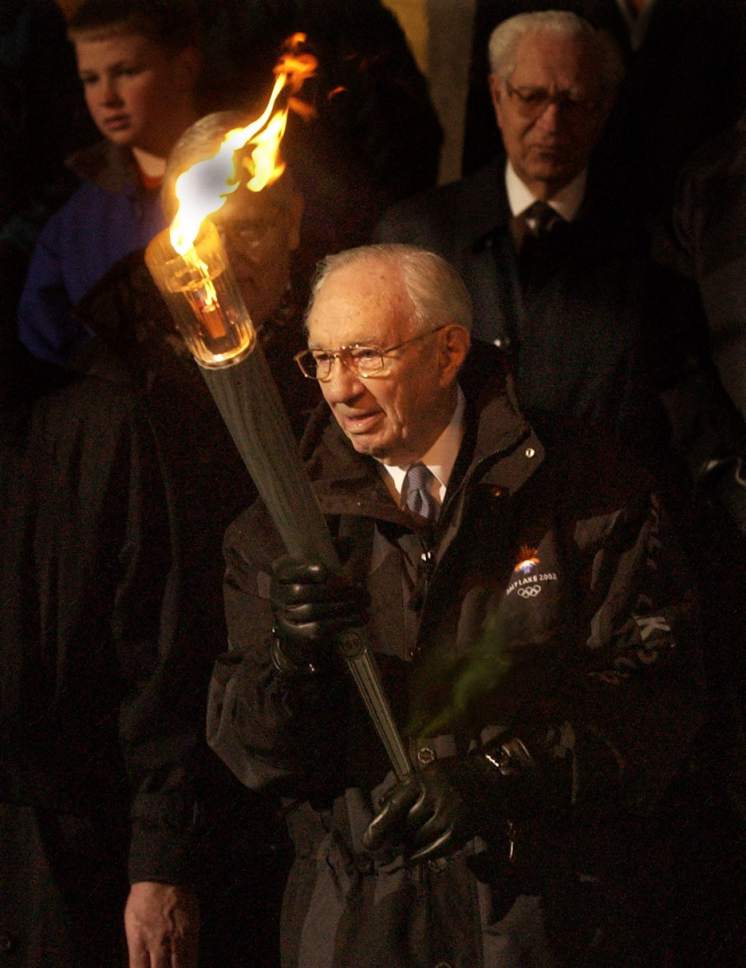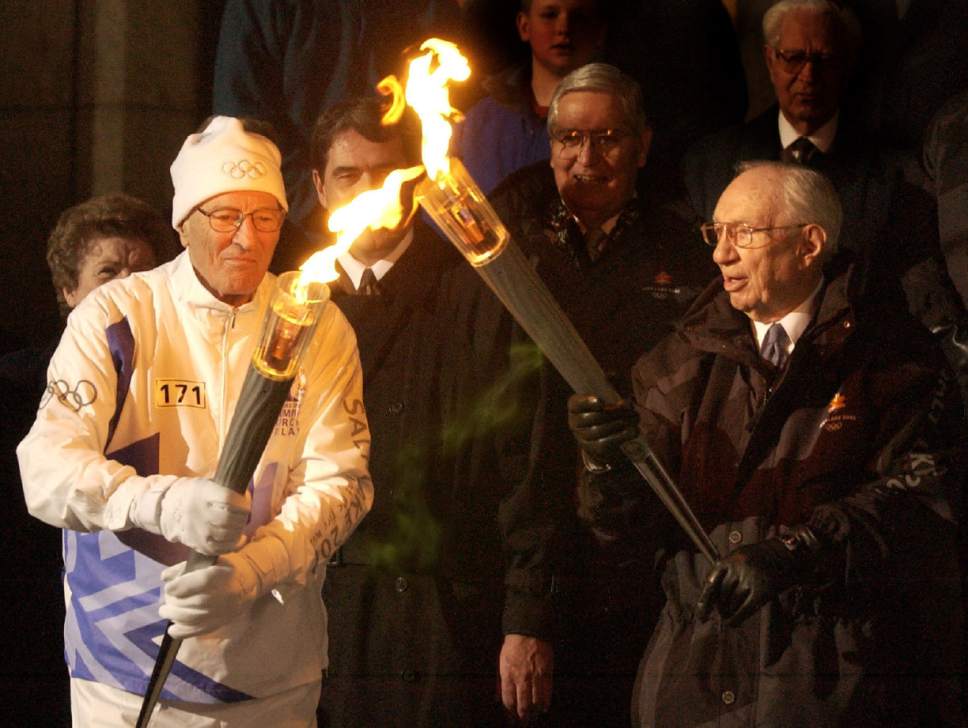This is an archived article that was published on sltrib.com in 2017, and information in the article may be outdated. It is provided only for personal research purposes and may not be reprinted.
About 15 years ago, as Mormons were readying Salt Lake City to welcome the world at the 2002 Winter Olympics, an unexpected edict came down from LDS Church headquarters:
No proselytizing.
No identifiable missionaries strolling downtown. No black church nametags. No one handing out religious pamphlets on Main Street. No pushing the Book of Mormon on unwary visitors. No scolding smokers or drinkers. No public preaching.
Choosing not to use the games as a platform for conversion was an odd turn for a city built on the missionary zeal of The Church of Jesus Christ of Latter-day Saints.
But it worked.
"The subtle approach, in the end, was a brilliant move by the church," Washington Post reporter Hank Stuever wrote at the time. "The only religious shenanigans and Bible-thumping at the Winter Games came courtesy of angry other denominations, whose members circled Temple Square with anti-Mormon signs and pamphlets and posters."
Everyone "looked nutty except the Mormons, who looked golden," Stuever said. "Underneath, the Molympics rang true and warm."
Looking "golden" while tens of thousands turned out — and millions more tuned in — was precisely what the Utah-based faith was going for during the Olympics and proved to be a pivotal moment toward a softer, more nuanced media approach for the global religion — a move evident in the intervening decade and a half.
So how did it happen?
"The national media had dubbed it the 'Mormon Olympics,' " recalled Joel Campbell, a journalism professor at LDS Church-owned Brigham Young University. "As LDS public relations professionals thought about that, they decided that's not who we want to be."
Instead, Mormons wanted to present themselves as "real people," he said this week, "and friends."
Campbell was among those the church tapped in 2002 to work with national and international media. He and others were instructed not to wear suits or white shirts ("We don't want you to look like missionaries"), but to pull out sports coats and go more casual.
The church held mandatory hospitality workshops for the thousands of perky LDS volunteers. The sessions began with the acronym "F-R-I-E-N-D-S," standing for qualities they should embody — friendly, respectful, informative, enthusiastic, nonjudgmental, dedicated and spiritually prepared — to ensure they didn't impose their values on visitors. By and large, they didn't.
Mormons then just sat back and enjoyed the visitors, the competitions and the festive atmosphere — just like everyone else.
The late LDS Church President Gordon B. Hinckley, known for his PR savvy, held the Olympic torch aloft on the steps of the faith's downtown Administration Building. He and other Mormon leaders granted interviews and were visited by President George W. Bush and first lady Laura Bush, U.N. Secretary-General Kofi Annan, German President Johannes Rau and other national and international dignitaries. LDS authorities also went to downhill skiing, ice hockey and figure skating events.
Hinckley, who died in 2008, was especially wowed by the half-pipe acrobatics.
"You'll be able to find a drink in Salt Lake City," the LDS leader assured NBC News anchor Tom Brokaw in a report aired during the games.
For Campbell, the overall message was that Mormons could take their place on the world stage and need not "be ashamed of who we are."
Before the games, the church's advertising effort was called "Truth Restored," which spelled out distinctive Mormon beliefs and offered a free copy of the faith's foundational scripture. Within eight years, the church replaced that with its "I'm a Mormon" campaign, designed to depict everyday Latter-day Saints as not much different than the neighbor next door. They ski, they surf, they dance, they ride motorcycles, they sing in rock bands, they design buildings, they milk cows.
This newfound confidence allowed LDS Church spokesmen not to overreact to the satirical, raunchy "Book of Mormon" musical, saying only, "The production may attempt to entertain audiences for an evening, but the Book of Mormon as a volume of scripture will change people's lives forever by bringing them closer to Christ." They then took out ads in playbills encouraging theatergoers to read the real thing.
Mormon officials even moved from challenging any reporter, including Stuever, who dared to mention the church's sacred underwear known as "garments," to nowadays posting photos of the clothing on its own website.
Of course, such Olympic-size openness and optimism didn't work for everyone or with every media report.
During Mitt Romney's two presidential runs, plenty of his fellow Mormons took umbrage at the coverage of the former Olympic "turnaround" expert and his faith.
Many members "hold a strong defensive attitude when it comes to Mormon-related issues in the media … and still have something of a persecution complex, thinking that the world is going to get us," said Chiung Hwang Chen, a media expert at BYU-Hawaii, "and we have to wear our armor at all times against the corruptive world."
The church has encountered negative press in recent years, she wrote in an email, over its opposition to same-sex marriage, its critique of the Ordain Women movement, and its denial of religious rites for children of gay couples.
The biggest change since the Beehive State hosted that global gathering, said Chen, is that "Mormons are no longer being treated as a quirky minority or one that is safely confined to the West and Utah."
During those magical 17 days when the world's athletes, coaches and fans partied in the Mormon playground, they discovered Latter-day Saints were eager playmates.









